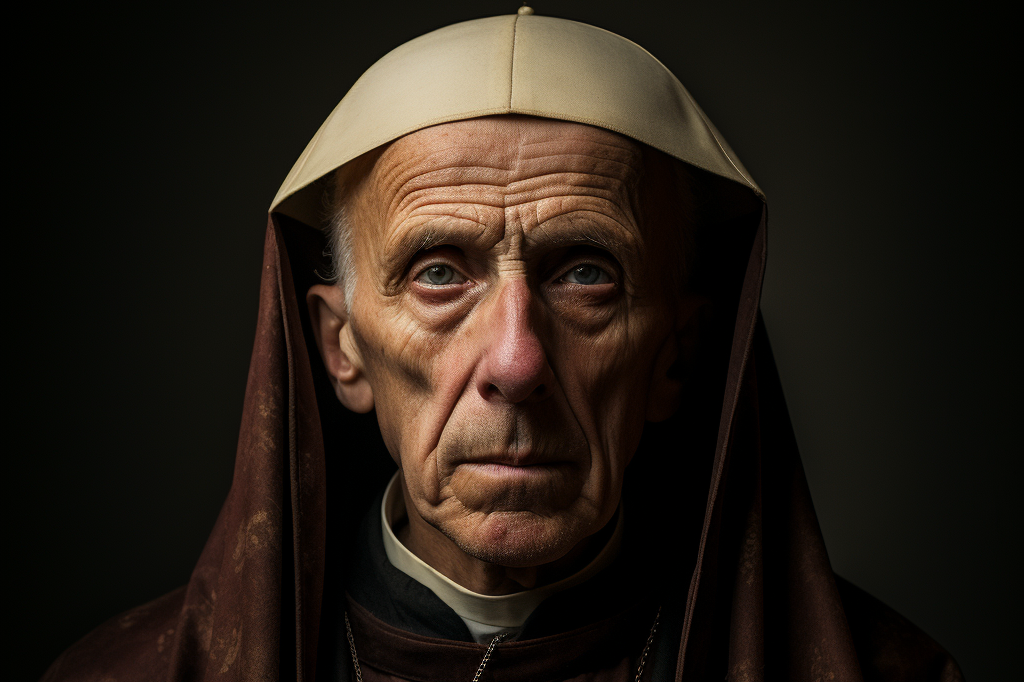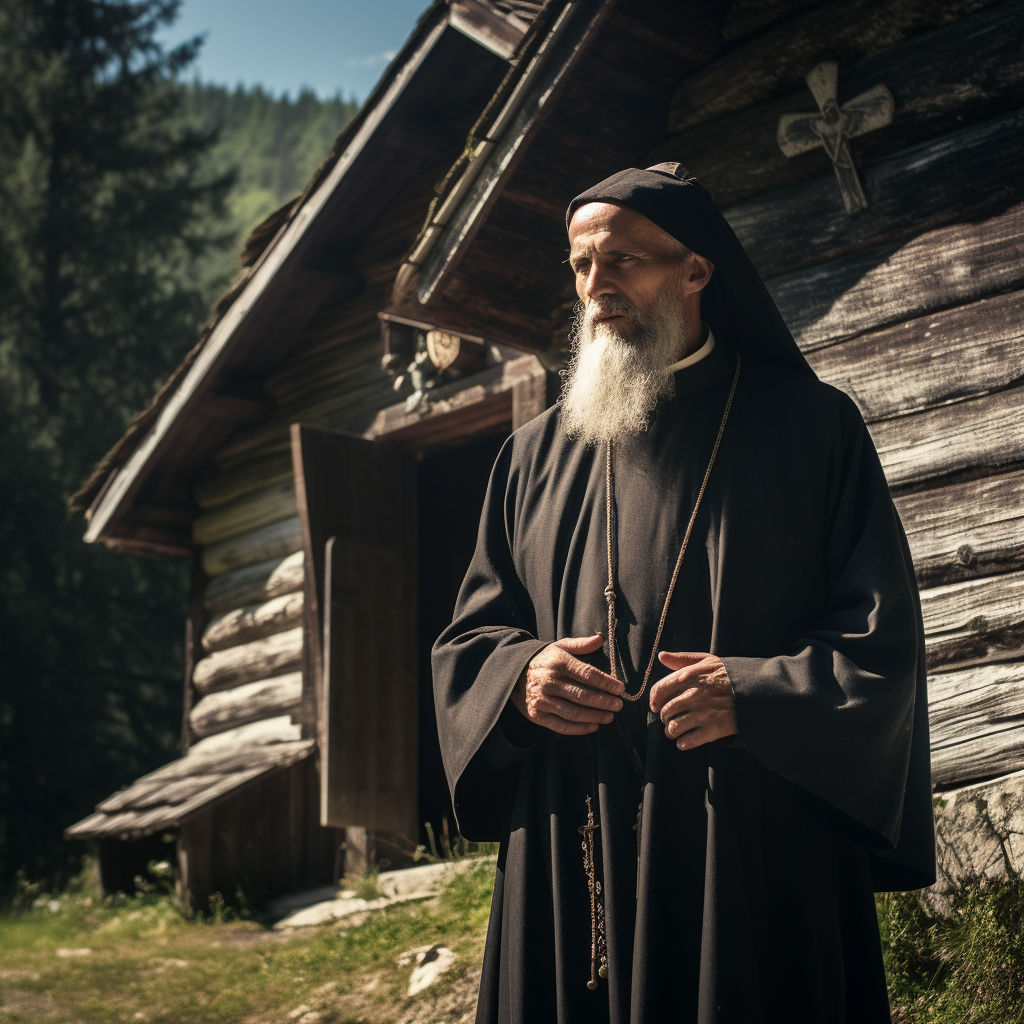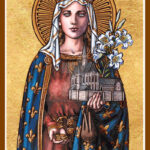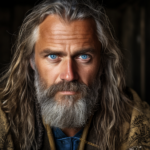
St. Bruno
St. Bruno
St. Bruno – Founder of the Carthusian Order
When he lived:
St. Bruno, known as the founder of the Carthusian Order, lived during the 11th century, from 1030 to 1101.
Where he lived:
St. Bruno’s life was shaped in various locations across Europe, but he is most famously associated with the Chartreuse Mountains in southeastern France. It was in this breathtakingly scenic setting that he established the first Carthusian monastery, the Grande Chartreuse, in 1084.
Notable world events during the time of his life:
- The Norman Conquest (1066): In 1066, the famous Battle of Hastings took place, resulting in the Norman Conquest of England. William the Conqueror’s victory changed the course of history and had a profound impact on European politics and culture.
- The Investiture Controversy (1075-1122): A significant conflict arose between the papacy and secular rulers over the right to appoint church officials. This power struggle had a lasting effect on the relationship between religious and secular authorities in medieval Europe.
- The First Crusade (1096-1099): This remarkable event saw European Christians embark on a military campaign to recapture the Holy Land from Muslim control. The capture of Jerusalem in 1099 marked the end of the First Crusade and triggered a series of crusades that would last for centuries.
- The Battle of Manzikert (1071): The Seljuk Turks defeated the Byzantine Empire, resulting in the loss of Anatolia. This event marked a turning point in the Byzantine-Seljuk relations and further weakened the Byzantine Empire’s control over the region.
- The University of Bologna (Founded around 1088): While not an event per se, the establishment of the University of Bologna during St. Bruno’s lifetime became one of the oldest and most influential universities in Europe. It played a pivotal role in the development of European higher education.
- The Domesday Book (1086): In England, William the Conqueror commissioned the Domesday Book to assess the extent of his newly acquired kingdom’s wealth and taxable resources. The book provides invaluable historical information on medieval England.
His patronage:
St. Bruno is venerated as the patron saint of several important causes. These include:
- Calming storms: It is believed that he intercedes on behalf of those seeking protection and safety during turbulent times, both literal and metaphorical.
- Bruno also serves as the patron saint of the Carthusian Order, the monastic community he founded. The Carthusians, known for their contemplative and austere way of life, continue to be guided by St. Bruno’s spiritual legacy.
St. Bruno’s life and the events of his time were marked by significant upheavals and transformative developments. His dedication to a life of prayer and solitude amidst the bustling historical events makes him a fascinating figure to explore, even today.
Early life
St. Bruno, also known as St. Bruno of Cologne, was born in 1030 and died in 1101. He was the founder of the Carthusian Order. He belonged to the family of Hartenfaust, which was one of the principal families of the city.
Not much is known about St. Bruno’s childhood. The only information available is that he studied theology in the present-day French city of Reims. After studying, he returned to his native land in Cologne, where he was ordained a priest around 1055 and was provided with canonry at St. Cunibert’s.
Life as a Leader
In 1056, St. Bruno was recalled by Bishop Gervais to Reims, and the following year he was made head of the Episcopal School. His post involved being the director of the school and overseeing all the educational establishments of the diocese. He was the leader for eighteen years, and he maintained the prestige that the school of Reimshad attained under its former masters.
During his leadership, St. Bruno acquired an excellent reputation as an atheist and philosopher. Among his students were some prominent figures such as Pope Urban II, the Bishop of Langres, the Bishop of Reggio, and Robert. The school also produced a large number of prelates and abbots.
In 1075, St. Bruno was appointed chancellor of the Roman Catholic Archdiocese of Reims. His duties included the daily administration of the diocese. During that time, the pious bishop was succeeded by Mnasses de Gournai, who was a violent aristocrat without any real vocation for the church.
In 1077, St. Bruno discreetly avoided the cathedral city until 1080. This was a result of a conflict that was sparked when St. Bruno and the clergy at Reims urged for the suspension of de Gournai. De Gournai did not take the suspension lying down; he in fact had his retainers pull down the houses of his accusers and confiscate their goods. A popular riot by the masses compelled de Gournai to withdraw and seek refuge with Henry IV.
Other Forms of Service
St. Bruno left Reims and placed himself and his companions under the direction of Robert of Molesme, and they formed the Cistercians in 1098 with a band of other hermits. He, however, realized that it was not his vocation. He went with six of his companions to Hugh of Chateauneuf, the bishop of Grenoble, who installed them as the first lay brothers.
These lay brothers built an oratory with small individual cells where they lived isolated in poverty, fully occupied in prayer and study. They were frequently honored by the visits of St. Hugh, who became like one of them.
 In 1090, St. Bruno was called to Rome by one of his former students, Eudes of Chatillon, who had become a pope. The pope needed competent and devoted allies to continue the work of reform commenced by Gregory VII. There is no information on the exact position he occupied in Rome because it is confidential. He worked as an advisor, but he was wisely kept in the background.
In 1090, St. Bruno was called to Rome by one of his former students, Eudes of Chatillon, who had become a pope. The pope needed competent and devoted allies to continue the work of reform commenced by Gregory VII. There is no information on the exact position he occupied in Rome because it is confidential. He worked as an advisor, but he was wisely kept in the background.
Even though St. Bruno would have preferred to return to his solitary life, he had to remain in Italy near the papal court, to which he could be called in need. In 1091, St. Bruno and some of his followers constructed a little wooden chapel and cabins in a small forested high valley in the Roman Catholic Diocese of Squillace, and they lived there a life of prayer and devotion.
At the turn of a new century, St. Bruno’s companions died one after the other, and Bruno followed on October 6, 1101 in Sierra San Bruno.
Legacy
St. Bruno was venerated in the Roman Catholic Church; she was beatified by Pope Leo X in 1514, and he was canonized in February 1623 by Pope Gregory XV.
St. Bruno’s Feast Day is celebrated on the 6th of October, and he is attributed with holding the skull with a book and a cross with a Carthusian habit. He may be crowned with a halo of seven stars.
He is known as the patron saint of Germany, Calabria, monastic fraternities, Carthusians, trade marks, Ruthenia, and possessed people.
St. Bruno’s disciples praised him for his three talents: his great spirit of prayer, extreme mortification, and devotion to the Blessed Virgin.
5 Interesting Facts About St. Bruno
- St. Bruno founded the first two communities of the Carthusian
Order. - St. Bruno refused to be appointed a bishop and instead opted for
his solitary life. - Bishop Grenoble had a vision of St. Bruno before he visited.
him. - After the death of St. Bruno, a servant was sent to travel through
Italy, France, Germany, and England announced his death. - St. Bruno was never formally canonized because of the Carthusian Order.
maintains a strict observance of humility; he was just included in the
General Roman Calendar
Prayer to St. Bruno
Father, you called Saint Bruno to serve you in solitude. In answer to his prayers, help us to remain faithful to You amid the changes of this world. We ask this through Our Lord Jesus Christ, Your Son, who lives and reigns with You and the Holy Spirit, one God, forever and ever. Amen.



